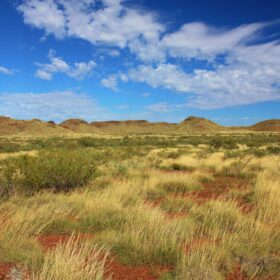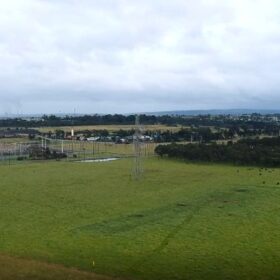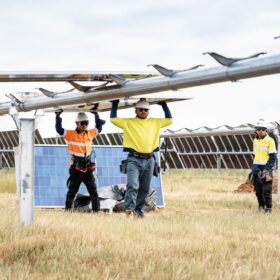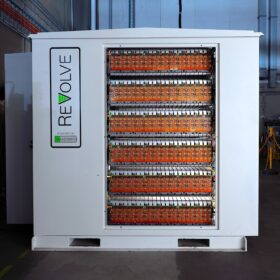As a result, NSW taxpayers have so far not paid a single dollar to operate the power station under the deal.
The Minns Labor Government reached the agreement with Origin in May 2024 to operate Eraring until August 2027.
The targeted and temporary agreement addressed the reliability gap forecast by the Australian Energy Market Operator (AEMO) if Eraring closed in 2025 as originally scheduled.
The agreement supports an orderly exit from coal-fired power, ensuring the lights stay on for homes, businesses and industry while NSW delivers more low-cost, reliable renewable energy.
Under the two-year agreement, Origin must still:
- Endeavour to generate at least six terawatt hours each year, the equivalent of the typical annual output of two of Eraring’s four generating units and enough to resolve the forecast reliability gap.
- Maintain Eraring’s existing workforce, commit to a maintenance plan and adhere to its licence conditions, which include environmental protections.
- Notify the NSW Government whether it will opt-in to the underwriting arrangement for 2026-27.
Origin intends to close Eraring Power Station on August 19, 2027.
NSW is progressing towards its 2030 renewable energy objectives, having secured more than half the 12 gigawatts of renewable energy generation and 40% of the required two gigawatts of long duration storage.
A detailed summary of the agreement is available online: www.energy.nsw.gov.au/nsw-plans-and-progress/regulation-and-policy/agreement-eraring
Minister for Energy, Penny Sharpe said:
“This Government is serious about keeping the lights on in NSW.
“This short, temporary agreement with Origin provides certainty while we deliver more renewable energy and storage to replace ageing coal-fired power plants.”
Treasurer, Daniel Mookhey said:
“We are protecting families and businesses from bill shock and power outages while the energy transition continues – without it costing them a cent this financial year.
“This deal was only necessary because Eraring was sold off by the Liberals and Nationals.”
Further information:
An all-of-government effort is underway to make sure that as coal-fired power stations retire, NSW has enough renewable energy, transmission and storage to meet the energy needs of every household, school, hospital, farm and business across the state.
The NSW Government is implementing a range of measures to reduce reliability risks in the short, medium and long term, including:
- NSW Electricity Infrastructure Roadmap (the Roadmap) is the state’s 20-year plan to transform our electricity system into one that provides affordable, clean and reliable energy for everyone. The Roadmap is well underway – around 35% of NSW’s electricity already comes from renewable energy. Projects and tenders have locked in more than half of the minimum required 12 gigawatts of renewable energy generation, capable of supplying almost a quarter of NSW annual electricity needs, and 40% of the 2 gigawatts of long duration storage required by 2030, capable of storing enough energy to supply 320,000 households for a day. This investment will bring more renewable energy into the grid, which will put downward pressure on electricity bills.
- The 2023 NSW Budget committed an additional $800 million to the Transmission Acceleration Facility to connect the state’s Renewable Energy Zones to the grid sooner and bring forward benefit schemes for communities.
- Established the $1 billion Energy Security Corporation, investing in storage projects to address gaps in the market and improve the reliability of the electricity network.
- $8.4 million in grants to Transgrid and AEMO to hire more engineers to fast-track the connection of four major battery projects. This includes the Waratah Super Battery – one of the largest batteries in the world – that is on track for completion by August 2025.
- Legislated a new minimum target of 28 gigawatt hours (GWh) of long duration storage by 2034, including an additional 12 GWh beyond the 16 GWh and 2 GW already set for 2030.
- Making it easier and faster to get planning approval for wind, solar and storage projects.
- The Minns Labor Government has given planning approval to six wind farms, 12 large-scale solar farms, 14 battery energy storage systems and one compressed air storage system.
- More than 943,000 NSW households and small businesses now have rooftop solar systems, with this figure continuing to grow. This is roughly a quarter of all NSW households.
- A $25 million program to increase solar panel installations in NSW apartments was announced last month.
- Launched the NSW Consumer Energy Strategy to help households and small businesses participate in and benefit from the state’s transition to renewable energy.
- The Peak Demand Reduction Scheme was expanded to provide financial incentives for household batteries, which take between $1,600 and $2,400 off the up-front cost.






By submitting this form you agree to pv magazine using your data for the purposes of publishing your comment.
Your personal data will only be disclosed or otherwise transmitted to third parties for the purposes of spam filtering or if this is necessary for technical maintenance of the website. Any other transfer to third parties will not take place unless this is justified on the basis of applicable data protection regulations or if pv magazine is legally obliged to do so.
You may revoke this consent at any time with effect for the future, in which case your personal data will be deleted immediately. Otherwise, your data will be deleted if pv magazine has processed your request or the purpose of data storage is fulfilled.
Further information on data privacy can be found in our Data Protection Policy.